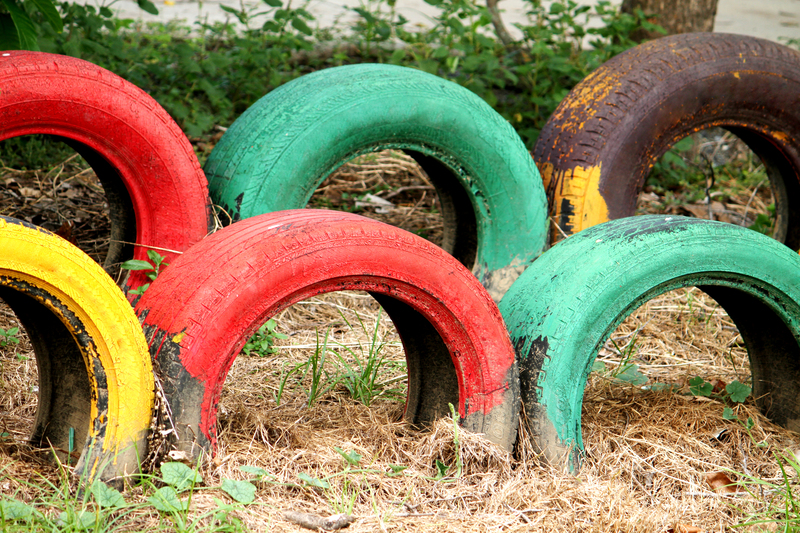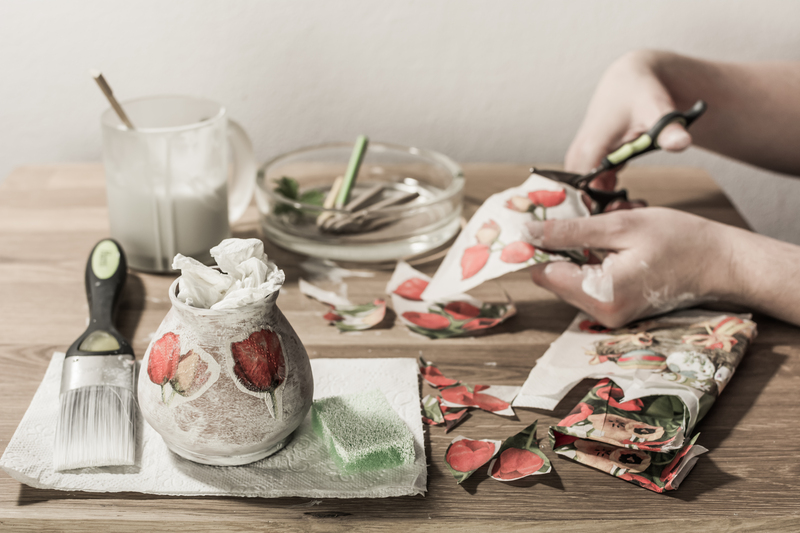Master the Art of Upcycling and Make Sustainability a Part of Your Lifestyle
Upcycling is not just a trend--it's a powerful movement towards a more eco-friendly and sustainable lifestyle. In a world grappling with ever-mounting waste and unsustainable consumption, embracing upcycling can redefine how we see our belongings and the environment. This comprehensive guide will help you master the art of upcycling, uncover its myriad benefits, and incorporate sustainability into your daily routine.
What is Upcycling?
Upcycling is the creative process of transforming unwanted, discarded, or unused materials into new products of higher value or quality. Unlike recycling, which often involves breaking down materials into their base components, upcycling repurposes items with minimal processing, conserving energy and reducing our carbon footprint.
The Difference Between Upcycling and Recycling
- Recycling: Breaks items down into raw materials to create something new but often downgrades the material quality.
- Upcycling: Directly transforms old or unused products into items of higher value, function, or beauty, requiring less energy and resulting in less waste.

Why Making Sustainability a Lifestyle Matters
Adopting a sustainable lifestyle is vital for the health of our planet and future generations. The current linear economy--take, make, dispose--puts immense pressure on natural resources and generates excessive waste. By integrating upcycling techniques into our daily routines, we can reduce consumption, minimize waste, and create a positive environmental impact.
Top Benefits of Upcycling for Sustainability
- Waste Reduction: Keeps usable materials out of landfills, lowering the burden on waste management systems.
- Resource Conservation: Less reliance on new raw materials, preserving natural resources and reducing pollution.
- Unique and Personalized Products: Upcycled items have character and uniqueness, often unavailable in mass-produced products.
- Economic Savings: Repurposing items saves money that would otherwise be spent on new purchases.
- Fostering Creativity and Community: Upcycling encourages creativity and often brings together people with shared interests.
Getting Started: Upcycling Basics for Beginners
If you're new to upcycling, start with *small projects* and build your skills. The ethos of upcycling is about seeing potential in what you already have and learning how to rejuvenate old items rather than throwing them away. Here's how you can begin your journey to make sustainability a part of your lifestyle through upcycling.
Step 1: Identify Upcyclable Items
- Household Goods: Old furniture, glass jars, worn-out clothing, or broken electronics.
- Packaging Materials: Cardboard boxes, tin cans, or plastic containers.
- Outdoor Materials: Wooden pallets, tires, and garden tools.
Stroll around your home searching for items that are no longer used or destined for the trash--these are perfect candidates for your first upcycling projects!
Step 2: Learn Basic Upcycling Techniques
- Painting: Give a fresh look to old furniture or jars.
- Sewing and Stitching: Repair or transform worn-out clothing into new styles or accessories.
- Decoupage: Applied decorative paper to objects for a unique finish.
- Reassembly: Combine parts from different items to create something entirely new.
- Repurposing: Turn mason jars into lamps or old doors into coffee tables.
Step 3: Gather Your Upcycling Toolkit
- Basic hand tools (hammer, screwdriver, pliers)
- Paint and brushes
- Sewing materials (needles, thread, fabric scraps)
- Hot glue gun
- Adhesives and cleaning materials
- Safety gear (gloves, goggles)
*Pro Tip: You don't need to invest in expensive tools for simple upcycling projects. Start with what you have at home!*
Creative Upcycling Ideas to Try at Home
To make sustainability part of your lifestyle, experiment with these creative upcycling ideas that can transform your home and daily routine:
Upcycled Home Decor
- Pallet Coffee Table: Refurbish an old wooden pallet with paint and caster wheels for a chic, rustic coffee table.
- Mason Jar Storage: Organize your pantry or craft room by converting glass jars into stylish storage containers.
- Drawer Planters: Turn an unused wooden drawer into a unique garden planter for your balcony or yard.
- Bottle Lamps: Repurpose glass bottles and LED lights into artful desk or side-table lamps.
- Old Window Picture Frames: Mount photographs behind the panes of retired window frames.
Fashion Upcycling
- Denim Revamp: Transform old jeans into bags, shorts, or patchwork projects.
- T-shirt Tote Bags: Cut and knot worn-out t-shirts into reusable grocery totes--no sewing required!
- Fabric Jewelry: Braid strips of scrap fabric into unique necklaces and bracelets.
Functional Upcycling
- Can Organizers: Cleaned tin cans make excellent utensil holders or planters.
- Book Charging Station: Turn hardback books into discreet phone charging stations.
- Egg Carton Seed Starters: Get an early start on your garden with egg cartons as biodegradable seed planters.
Tips to Incorporate Upcycling into Your Lifestyle
- Think Before You Throw: Challenge yourself to consider potential new uses for items before discarding them.
- Diversify Your Inspiration: Follow upcycling influencers, eco-crafters, and sustainability blogs for a steady stream of ideas.
- Attend Workshops and Swap Events: Participate in local community workshops--many public libraries, schools, and community centers offer upcycling classes!
- Educate Friends and Family: Bring others into the upcycling movement by sharing your projects and successes.
- Set Sustainable Goals: Make small, measurable goals like upcycling one household item per month.
The Environmental Impact of Upcycling
Upcycling can have a significant positive effect on the environment. According to environmental studies:
- Every ton of recycled and upcycled material keeps significant amounts of waste out of local landfills.
- Upcycling reduces demand for new products, subsequently lowering carbon emissions associated with manufacturing and shipping.
- By encouraging creativity in using existing resources, upcycling limits the exploitation of virgin materials and supports biodiversity.
Common Challenges and How to Overcome Them
- Finding Time: Start with manageable projects and gradually tackle bigger items as your confidence grows.
- Lack of Inspiration: Use platforms like Pinterest and Instagram to find step-by-step tutorials and upcycling communities for support.
- Space Constraints: Focus on compact projects--such as repurposing jars, tins, or small pieces of clothing.
- Limited Tools: Many creative upcycling projects require minimal tools--don't let lack of resources stop you from trying.
Going Beyond: Community and Social Upcycling
Upcycling isn't only about individual effort; it thrives in communities. Many neighborhoods have *repair cafes*, local upcycling workshops, and swap meets. You can join or organize events where neighbors bring unwanted items and collaborate on transforming them, strengthening community bonds while promoting sustainable living.
Successful Upcycling Projects Around the World
- The Upcycle Movement (Global): Groups and companies repurposing ocean plastic into bags, shoes, and even furniture.
- TerraCycle (USA/Global): An organization that collects hard-to-recycle materials and upcycles them into usable goods.
- Freitag (Switzerland): Designers transforming old truck tarps into unique urban bags.
- ReCreate (New Zealand): Social enterprise upcycling waste wood and textiles into stylish homeware.
How to Make Upcycling a Long-Term Habit
*Building a habit takes time and dedication. Here are some strategies to ensure that your commitment to sustainability through upcycling stays strong:*
- Document Your Progress: Keep a journal or start a social media account dedicated to your upcycling projects.
- Refresh Your Skills: Take online courses or attend local workshops to learn new upcycling methods and trends.
- Connect with Like-Minded People: Join forums, online communities, or local clubs to share ideas and tips.
- Celebrate Your Successes: Display your creations at home or gift them to friends and family as thoughtful, sustainable presents.
Final Thoughts: Join the Upcycling Movement Today!
Mastering the art of upcycling offers more than beautiful, unique items--it's a proactive step towards environmental stewardship and a sustainable lifestyle. As you embark on your upcycling journey, remember: small actions, when multiplied, yield great results. By transforming waste into wonder, you inspire your community, conserve our planet's resources, and affirm that sustainability is not just a choice but a way of life.

Frequently Asked Questions About Upcycling and Sustainable Living
- What materials are easiest to upcycle?
Cardboard, glass jars, wooden pallets, old clothes, and metal cans are some of the easiest and most versatile items to upcycle at home. - How can I upcycle if I'm not very crafty?
Start small--cleaning and painting old containers or cutting unused clothes into rags is a simple entry into upcycling. There are many beginner-friendly ideas and tutorials online. - Is upcycling really eco-friendly?
Absolutely! Upcycling minimizes the need for new resources, reduces landfill waste, and cuts carbon emissions associated with manufacturing and transportation. - Can upcycling save money?
Yes. By reusing and reinventing what you already have, you avoid purchasing new items, which can save you a significant amount over time.
Ready to Master the Art of Upcycling?
Start today. Look around your home, get inspired, and challenge yourself to turn something old into something extraordinary. Remember, every upcycled item is a victory for you--and for the planet.